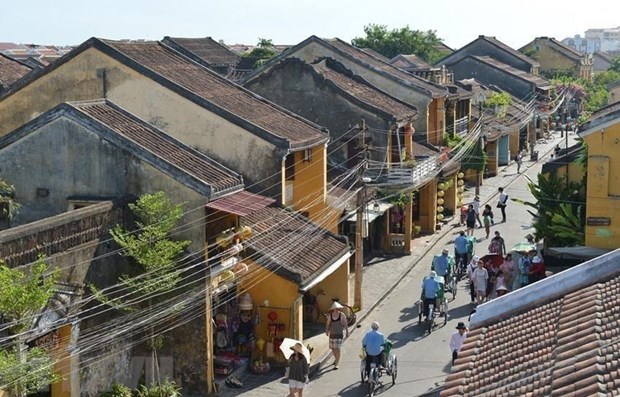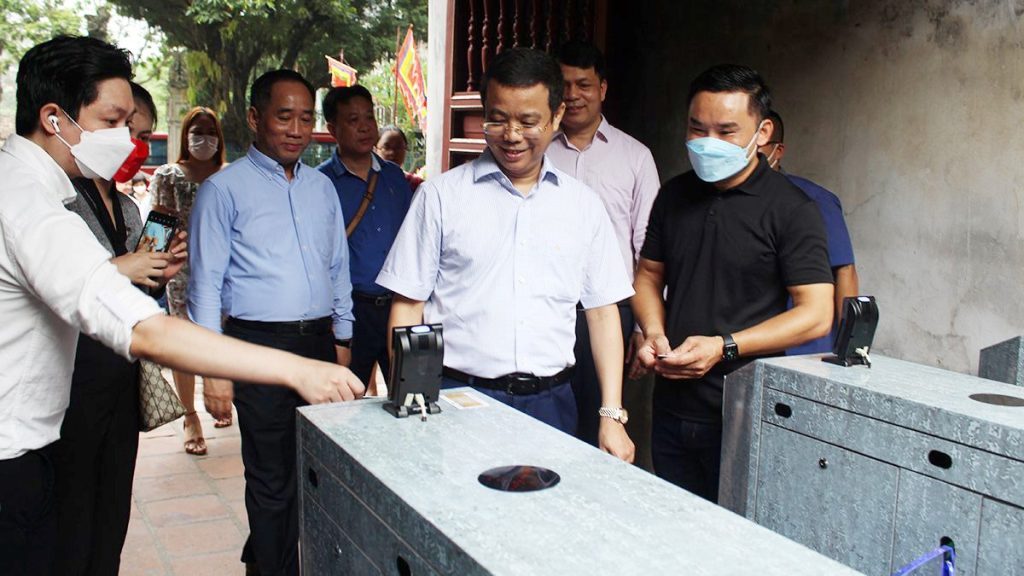(TITC) – Cleanliness is core indicator of ASEAN Clean Tourist City Standard. It refers to clean and sanitary environment at tourist sites, hotels, restaurants, public places…etc., including the quality of air, drinking water, and the liquid and solid waste collection and management system.
The public gathering place is a place where many people can make mutual interrelationship. The cleanliness along the public is reliant on individual behaviour and the attention to take care of that place. Besides, the cleanliness along the public gathering places is an important factor affecting the common welfare of all people. In fact, the cleanliness along the public gathering places significantly contributes to improve their living standards and the urban beauty, which is an unavoidable requirement for tourists.
In cleanliness indicator, take into consideration the cleanliness along the public gathering places such as the public buildings, information centres, green areas, commercial centres, resorts and parks, the main roads, and the public toilets, etc.
It will focus on the reality of common views along the public gathering places of the cities and measures the limitation of the attention to the municipal authority’s cleanliness. In general, the urban visitors as well as the general public are attracted with the appearances of their visiting places. And this is also the condition to enhance each urban prestige.
Cleanliness indicator includes cleanliness of public area, cleanliness of public toilets, cleanliness of tourist sites, and cleanliness along the main roads.
Cleanliness of public area is an important indicator to convey a positive message to tourists as well as to local people and the private sector. The cleanliness of all public areas and buildings, green areas, markets, stations, information centres… should be assessed by the local authorities and sanctions put in place to enforce the rules. The extent of appropriate equipment such as the number of dustbins in public areas should be evaluated and the frequency of maintenance should also be referred to.
Cleanliness of public toilets refers to the number of public toilets at tourist sites in the city, the frequency and quality of their maintenance.
Cleanliness of tourist sites (museums, temples, parks, beaches etc.…) evaluates whether there are enough rubbish bins at tourist sites, the frequency of the collection and disposal of garbage and the general cleanliness and maintenance of the area surrounding the sites. A reference to sanctions for not abiding by the rules should be made.
Cleanliness along the main roads assesses the conditions along the main roads within the city as well as from one city to another, whether they are regularly cleaned and if the appropriate equipment is available (i.e. rubbish bins at regular interval…).
Below is the table of assessment on detail indicator of cleanliness:
| CLEANLINESS | Requirement of major criteria | Criteria | Evidences for criteria | Appraisal | Score |
| 1.Cleanliness of public area | Does the city assess and maintain regularly the cleanliness of public areas? | How often do the city authorities clean public areas? | Prove that the city is cleaning its public areas regularly (existence of the authority in charge of maintenance, schedule of cleaning activity, missions, staffs, and equipment) | Less than 50% Up to or more than 50% (At least 50% to get a score) | |
| Is public furniture (public benches, lighting, bus shelters, etc.) maintained and regularly cleaned? | Prove that the city is cleaning its public furniture regularly (existence of the authority in charge of maintenance, schedule of cleaning activity, missions, staffs, and equipment) | Yes No | |||
| Are there sufficient public dustbins in public areas? | Provide a map of public areas indicating the presence of public dustbins and specify the total number: at least one dustbin on each entry of public building; two dustbins per square; one dustbin every 200m along the walkway and in parks. | Yes No | |||
| Are these regularly emptied? | Provide detailed schedule of how often dustbins are emptied per day | Yes No | |||
| Are public buildings properly signposted? | Provide a map indicating public buildings and the signposts showcasing its locations | Yes No | |||
| 2.Environmental regulations | Are environmental regulations being implemented in the city? | Do environmental regulations controlling the operation of tourism businesses exist? | Prove the existence of environmental regulations controlling the operation of tourism businesses | Yes No | |
| Are these enforced in the city? | Prove the presence of measures aimed at enforcing environmental regulations in the city and evidences of implementation (reports shall be provided) | Yes No | |||
| 3.Pollution | Does the city fight against pollution? | Have water quality norms been set by the authorities? | Prove the existence of authorities’ decision on water quality (freshwater, seawater, drinking water) control and norms | Yes No | |
| Are these enforced in the city? | Provide list of measures taken by relevant authorities to control water quality norms | Yes No | |||
| Is water quality in the city within set norms? | Provide the schedule and results of the water quality check approved by relevant authorities | Yes No | |||
| Have air quality norms been set by the authorities in the city? | Prove the existence of authorities’ decision on air quality control and norms (local standard) as well as provide results and schedule of test approved by relevant authorities | Yes No | |||
| Are these enforced in the city? | Provide list of measures taken by relevant authorities to control air quality norms | Yes No | |||
| Have air quality and water quality been publicly announced? | Provide periodically regular report of air quality and water quality in the city and justify the types of media for announcement (TV, press…) | Yes No | |||
| Have measures been introduced by the authorities to mitigate air pollution? | Provide list of measures taken by relevant authorities to control and mitigate air pollution (for ex. traffic jam reduction initiatives, catalytic converters, use of fuel, awareness raising campaigns…) | Yes No | |||
| Are these enforced in the city? | Provide evidences of implementation of the measures to mitigate air pollution | Yes No | |||
| Have measures been introduced by the authorities to control noise pollution? | Prove the existence of authorities’ decision and measures to control noise pollution | Yes No | |||
| Are these enforced in the city? | Provide evidences of implementation of the measures to mitigate noise pollution (proofs expected: list of complaints registered for noise pollution, noise-reducing wall, ban some vehicles in the city at some specific hours…) | Yes No | |||
| 4.Environmentally friendly transport | Does the authority implement measures related to environmentally friendly transport? | Is there any public transport system in the city? | Provide a map indicating the public transport system in the city (i.e. bus, subway, tramway, taxi, public bicycle, train…) | Yes No | |
| Have the authorities introduced environmentally-friendly public transport? | Prove that the public transport use environmentally-friendly system (i.e. with pollution controlling mechanisms, and/or use of electric energy and/or catalytic converter) | Yes No | |||
| Have the authorities imposed regulations to control pollution from traffic? | Prove the existence of specific regulations and measures to control pollution from traffic | Yes No | |||
| Are these enforced in the city? | Provide evidences of implementation of the measures to mitigate and control pollution from traffic (with the presence of responsible authority) such as banning vehicles that produce too many emissions; imposing a congestion charge zone in the city, etc… | Yes No | |||
| What proportion of environmentally friendly vehicles and non-motorised vehicles does the public use compared to total number of vehicles? | Provide a classification of vehicles used by the public indicating the number and proportion of environmentally friendly vehicles and non-motorised vehicles | ________ % (At least 30% of total number to get a score) | |||
| Have the authorities encouraged (local) people to use non-motorised transport? | Prove the existence of measures encouraging citizens to use non-motorised transport such as cycling and walking…etc. | Yes No | |||
| 5.Sustainable use of energy | Does the tourism private sector implement specific measures and/or strategies to encourage sustainable use of energy? | What proportion of hotels in the city use energy saving and efficiency devices and renewable energy? | Provide tourism industry data with a classification of hotels which use energy saving and efficiency devices/technologies (such as eco light bulbs, on-off switches, the use of key cards, etc.) and/or renewable energy (solar power, etc.). Measures taken by the hotels to encourage their guests to save energy are also needed. | Less than 50% Up to or more than 50% (At least 50% to get a score) | |
| What proportion of restaurants in the city use energy saving and efficiency devices and renewable energy? | Provide tourism industry data with a classification of restaurants which use energy saving and efficiency devices/technologies (such as lighting, water heating, kitchen ventilation, heating and cooling, maintenance) and/or renewable energy (solar power, etc.) | Less than 50% Up to or more than 50% (At least 50% to get a score) | |||
| Are tourist businesses made aware of energy-saving techniques that they can use through awareness campaigns? | Prove the presence of measures included awareness-building campaigns about energy saving techniques and energy efficiency initiative aimed at tourist businesses in the city | Yes No | |||
| Are there any incentive measures for sustainable use of energy? | Provide the list of incentive measures taken to encourage sustainable use of energy (frequency, type of action …) and the result (follow-up the use of energy efficiency methods, the decrease of amount of energy consumption, etc.) | Yes No | |||
| – Number of Detailed Indicators: 5 – Number of Criteria: 28 | Total | 28 |
Tourism Information Technology Center




